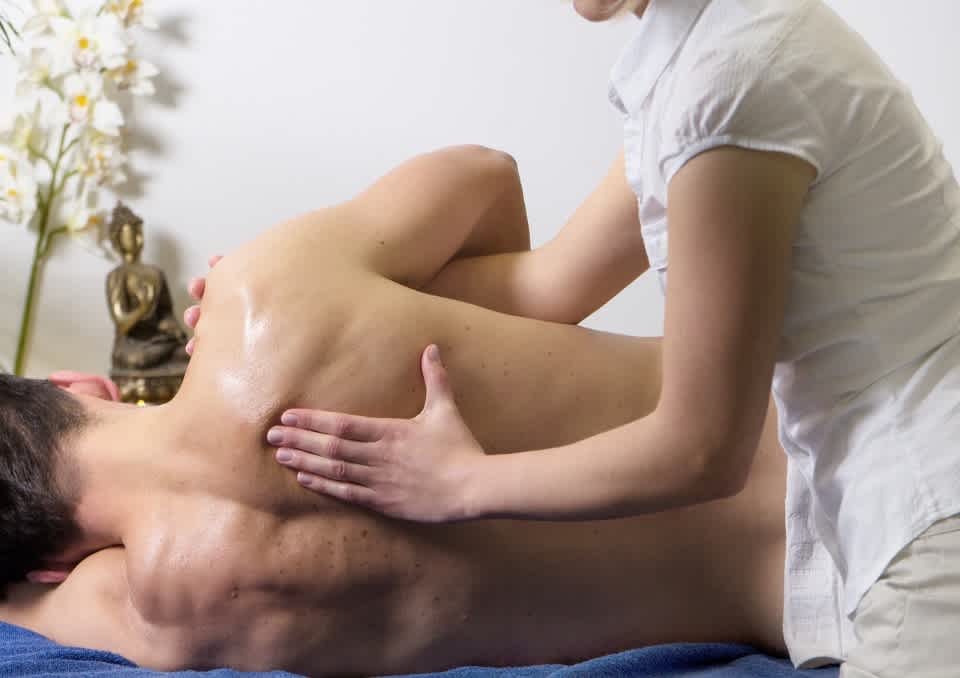Deep tissue massage is well known for having some harsh side effects, such as pain, sore muscles, headache, and nausea. But, can it cause flu-like symptoms? In this article, we look into what causes the side effects of deep tissue massage, and whether or not they can inflict flu-like symptoms.
So, can deep tissue massage cause flu-like symptoms? Flu-like symptoms are fairly common after a deep tissue massage, and is known as Post Massage Soreness & Malaise (PMSM). PMSM presents differently in everyone with different degrees of severity, and the appearance of different flu-like symptoms.
Read on to learn more about the side effects of deep tissue massage, and what causes them.
Can Deep Tissue Massage Cause Flu-Like Symptoms?
Deep tissue massage is well known for causing flu-like symptoms, often thought to be a result of toxins being flushed from the body. These symptoms vary in severity, and in appearance - not all clients will experience flu-like symptoms or the same symptoms.
Most of these symptoms can typically be attributed to the flu but, in most cases, your client is unlikely to actually have the flu.
Typical flu-like symptoms can include:
- Pain
- Muscle soreness
- Headaches
- Nausea
- Fatigue
Why Do I Feel Like I Have a Cold After a Massage?
There are two main schools of thought as to why clients may feel like they have the flu or cold after having a deep tissue massage or a sports massage. The first is the idea that flu-like symptoms are a result of toxins being released and flushed from the body.
However, this is thought to be a myth by Western scientists. The body has its own natural ways of expelling bodily waste; catabolic waste, metabolic waste, and digestive waste. Massage doesn’t flush natural toxins from the body, least of all lactic acid, as there is little to none left in the muscles after around an hour. Likewise, massage cannot remove environmental toxins, but sweating can remove some environmental toxins (although, not all).
There is an alternative Western medical thought as to why some clients feel like they have the flu after a deep tissue massage. A deep tissue massage usually leaves the muscles feeling sore, as if clients have done intense exercise, and when there is muscle soreness, the immune system naturally activates T-Cells to try to repair those muscles. As such, this immune system response can make some clients feel as if they are ill.
What Toxins Are Released During Massage?
“Toxins” which reside in the body and in the bloodstream are removed through the colon, the kidneys, the lungs, the liver, sweat glands, and via digestion. In this case, we’re referring to toxins as “a poisonous substance that is a specific product of the metabolic activities of a living organism and is usually very unstable, notably toxic when introduced into the tissues, and typically capable of inducing antibody formation.”.
Although, as we have previously touched upon, massage does not release toxins, or flush them from the body. What it can do, however, is improve circulation so that the body’s own natural ways of removing toxins can work more effectively.
What are the Side Effects of Deep Tissue Massage?
The main side effects of deep tissue massage are as follows:
- Pain and muscle soreness
- Fatigue
- Headache
- Nausea
Usually, these side effects are minor and are nothing of concern; they will usually subside within a few days. However, when dealing with new clients, ensure to check that they do not fall into one of the following groups. If they do, they should consult a GP before a deep tissue or sports massage is given.
- Has a history of blood clots or a clotting disorder
- Is taking blood thinners
- Has a bleeding disorder
- Has cancer, or is undergoing cancer treatment
- Has osteoporosis that has spread to the bones
- If they are pregnant
- If they have an open wound or skin infection of any kind
Is Too Much Deep Tissue Massage Harmful?
Unless a client is an athlete or is managing chronic pain, it is recommended that they do not have more than two or three deep tissue massages per week, waiting a minimum of 48 hours between massages. However, as a massage therapist, you should be able to assess your client’s condition, and their response to deep tissue massage, to be able to determine a suitable schedule.
Too much deep tissue massage, or an unsuitable technique, can cause problems such as soft tissue tears, fractures, and severe bruising. Rather than giving too many deep tissue massages in a short period of time, you have the option to recommend other complementary interventions such as a different, more gentle form of massage, acupuncture, yoga, physiotherapy, chiropractic, or gentle exercise to boost their results.
Final Thoughts
Flu-like symptoms are fairly common after a deep tissue massage, with symptoms including headache, soreness, fatigue, and nausea. However, this is not caused by the release of toxins, as has been widely believed by both clients and industry professionals for many years. That said, massage can improve the circulation of blood flow, making the body’s own natural ways of removing toxins more effective.
Western schools of thought believe that these flu-like symptoms are actually a result of the immune system waking up to handle the muscle soreness and minor damage caused by the deep tissue massage itself.
Either way, we know that deep tissue and sports massages offer a wide range of benefits from pain relief to mental health. At Breeze Academy, we offer Level 3 and Level 4 CPD courses in Sports Massage Training to help you begin your journey and gain both the knowledge and understanding required to plan, provide and evaluate sports massage therapy. Alternatively, we also offer CPD courses in acupuncture and yoga teacher training for healthcare professionals that would allow you to expand your practice, offering new interventions and enhanced results.
